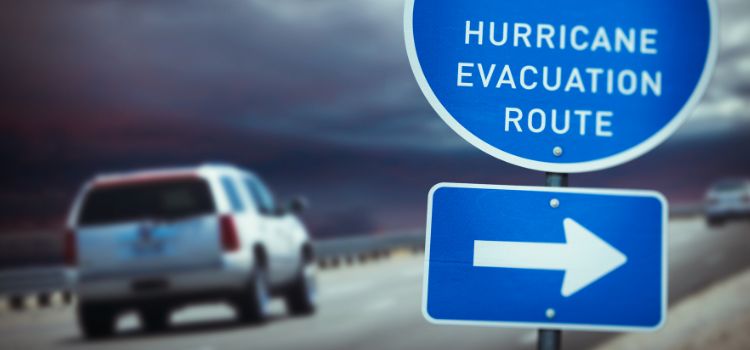You’ve heard the question, “Can a hurricane flip a car?” but how high are the winds needed to do it? And if you’re worried about your safety, what can you do if you notice a hurricane approaching while driving?
Contents
In this article, we’ll answer these questions and more. Here’s what you need to know. First, it’s never a good idea to drive in a hurricane, but if you are on the road and you see one coming, you should stop immediately.
Can hurricane winds flip a car?
A standard car may not be able to survive hurricane-force winds, but high-profile vehicles can. Because of their weight, classic cars cannot quickly flip over. However, high-profile vehicles can cause problems when driving, particularly on open roads.
As such, these vehicles should be kept in a garage or parking garage. Moreover, it is recommended to place heavy objects on garage floors to protect them from the winds. If you do not have a garage, you should park your vehicle near your house.
What wind speed can lift a car?
In an average hurricane, a typical car could be lifted about seven feet off the ground by wind speeds of about 90 mph. Even an RV could be blown off its wheels if the wind is high enough.
Some examples:
- Small car – 90 mph winds or around category 1 hurricane.
- Pickup truck (Ford F150, Chevy Silverado) – 115 mph or around category 3 hurricane.
- Jeep (Wrangler, CJ, etc) – 115 mph or around category 3 hurricane.
- Camper or Motorhome – 91 mph or around category 1 hurricane.
- Travel Trailer – 91 mph or around category 1 hurricane.
- Fifth wheel trailer – 91 mph or around category 1 hurricane.
But even if the wind is strong enough to cause an overturn, a car with enough weight would likely be able to stay afloat. The following table shows how fast heavy winds could lift a typical vehicle.
In a hurricane, the winds are mostly horizontal, not vertical. You would usually tumble along the ground or be knocked over.
However, the wind can pick up people and it could peel the pavement off the ground. But your skin wouldn’t explode. That is because the wind would not cause a vacuum. Instead, it would lift the car but wouldn’t blow you off.
Is it safe to drive during a hurricane?
Hurricanes can make driving extremely hazardous. Intense winds can push vehicles across the road, while flooding can leave areas of weakened structures and deep water. It’s best to leave town as early as possible to avoid traffic and driving through the worst weather.
If you’re unable to leave, however, you should stay alert for any changes in weather and road conditions. While driving during a hurricane, it’s best to park in a garage building, preferably one with extra protection.
If you plan to drive in a hurricane-affected area, slow down and pay close attention to the weather conditions. Roads may be crowded with people leaving the area. Avoid driving in high water.
Standing water can pose a danger, and hurricanes also cause downed power lines and other debris. If you can’t see the road ahead, turn around. Even small amounts of water can be dangerous.
While hurricanes don’t have a schedule, you should be aware of potential storms and regularly check the weather forecast. However, it would help if you were cautious, as storms can occur without warning.
The weather forecast can change overnight, so stay calm and assess the situation before driving. If you have no choice but to drive, consider taking an alternate route. Moreover, never ignore weather advisories and take the road safely.
Driving through flooded streets is the most dangerous maneuver during a hurricane. Water may be shallow, but it’s not always easy to determine. Drivers should avoid the area during hurricanes and group errands together if possible.
Flooded roads can be very slippery and will slow vehicles down. Make sure you drive slowly and keep a safe distance from other drivers on the road. In addition, stay within the speed limit, as well as maintain a safe distance.
What if a hurricane is approaching while driving?
If you’re concerned about the safety of your travel, here are some hurricane driving tips. Depending on the severity of the hurricane, you may only have a few days’ notices before the storm hits.
If you’re unsure of its strength, consider evacuating the area as soon as possible. If possible, evacuate to higher ground. If you’re driving, keep a safe distance.
Always check the weather forecast. Hurricanes are unpredictable, so their tracks change constantly. Always stay in the loop with the latest information on hurricanes and hurricane tracks.
Ideally, you’ll be warned ahead of time to avoid driving during the storm, but the last thing you want is to end up stranded on a beach with no place to stay! If you get on the road during a hurricane, try to take extra supplies to the area where you’ll be staying.
The worst thing you can do during a hurricane is drive through a flooded road. Flooding can be deceptively deep. A seemingly small puddle could be a dip in the road, which is flooded. If you don’t want to be caught in the flooded road, consider parking your vehicle behind a building. As long as you’re driving slowly, you’ll be safe from the worst effects of the hurricane.
Even the most sturdy house won’t hold up during a hurricane. It’s better to leave than risk your safety. Before the hurricane, prepare an emergency supply kit containing essential items.
This includes identification, cell phone chargers, and any other medications or supplies you may need. Also, remember to unplug all electrical and gas appliances to protect yourself from the hurricane. You can also turn off gas and electricity to your home if the storm hits.
What if you’re in a car during a hurricane?
Related – can a hurricane lift a person?
Here are a few tips to keep you safe if you’re stuck in a vehicle during a hurricane. First, keep your car covered. Water can corrode electrical wiring and create a mess in your engine. Also, signs can become projectiles.
You should never start your car during a hurricane – it could damage your engine and fuel system. You can disconnect the battery, too, to dry out the inside of your car and avoid getting trapped inside.
Before the hurricane hits, be sure to take photographs of your vehicle. These pictures will serve as proof of its condition before the storm. They may be used to file an insurance claim if you get stuck. Check your policy to make sure it covers such a situation.
If your car is insured, store the photos in a secure place. A waterproof, fireproof box is a good choice. Also, make copies of important documents, including your car keys.
When the storm hits, your car can sustain damage from either an internal flood or external debris. If your vehicle is severely damaged, you may have to rent another car until repairs are completed.
Rental car coverage is available in many auto insurance policies. This coverage is typically added to the standard policy and is only available if the insurance company handles your claim.
Once the storm hits, you should contact your insurance company and report any damages. Taking pictures of your car is also helpful, as long as you do it safely and without causing too much damage to the vehicle.
Remember to stay off the road. Driving over standing water can damage your vehicle, so you should avoid it as much as possible. Park your car at higher altitudes. It would help if you also considered avoiding hurricanes by staying in an elevated area.
Driving during a hurricane is unsafe if it’s affecting your neighborhood. This is an excellent option if your car is covered.

